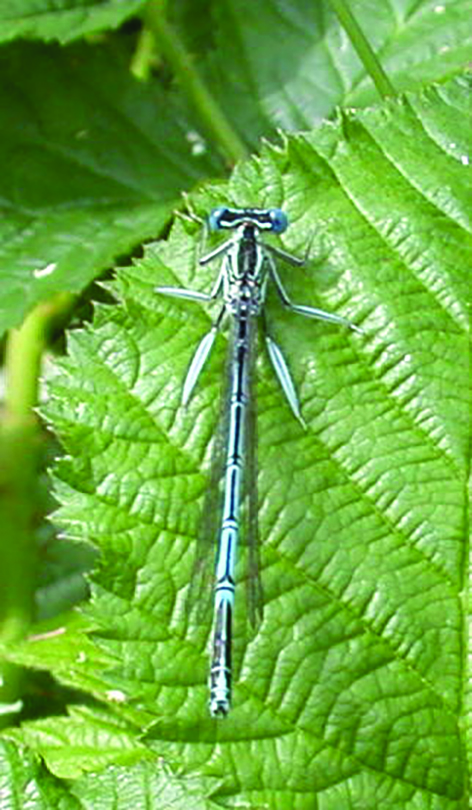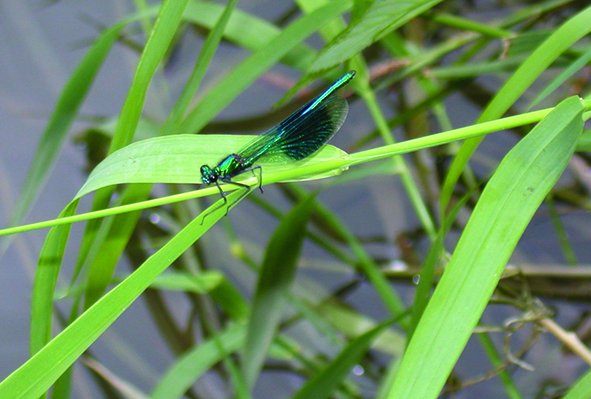Nature Note – June ’23
Odonata (Part 1) – Damsels and Dragons
Odonata are the ‘tooth-jawed’ insects, a group which includes Damselflies and Dragonflies. Late May to early October are the best months to look for these insects which are often stunningly beautiful when seen close-up but ferocious, as the name ‘dragonfly’ suggests, if you are a smaller insect.



These interesting insects spend most of their lives (two or three years) underwater as drab nymphs feeding on other underwater insects. They emerge from the water for the much shorter period of their lives (a matter of weeks) as adults.
Emergence
Emergence is a complex process as nymphs are gill breathing, extracting oxygen from water, whereas adults breathe air. Additionally, adults are winged insects whereas nymphs move through their underwater homes by crawling and ‘jet propulsion’.
The process of breaking out of the larval case, pumping fluid into wings, drying out and being ready to fly from danger, is a period of vulnerability. In different species emergence can be whilst attached to a stem at or above the surface of the water, or by crawling from the water to choose bankside vegetation on which to cling.
Adults continue to feed now by flying down smaller insects. The main objective of adults is to find a mate and defend a territory. And for the females to deposit fertilized eggs below the surface in the chosen pond or stream. This is often the water from which they emerged themselves.
It can be difficult to identify flying insects as they are fast moving and constantly making unexpected twists and turns with their four wings able to twist independently. However, as cold-blooded creatures they need to spend periods basking in the sun. They do this either on the ground or on a warm surface such as a fence or hanging from vegetation. It may then be possible to obtain excellent views and close-up photographs.
Damselflies
The largest damselfly that is regularly seen in our area is the banded demoiselle. Most damselflies rest with their wings flat against the body (abdomen). Dragonflies rest with their two pairs of wings at right angles to the abdomen.
Demoiselles do neither; they rest with wings held up above the abdomen rather like mayflies. The males have dark blue patches on translucent wings and the females have a greenish blue abdomen and uniform brownish green wings. They are easy to find on sunny days along canals and streams.
Other damselflies that are not too difficult to find locally are the large red damselfly, one of the first species to emerge and an insect that sometimes breeds in garden ponds. The red-eyed damselfly, commonly seen ‘basking’ on the leaves of water lilies. And four sorts of blue and black damselfly.
These species can be confusing at first but blue-tailed (mainly dark with a single bright blue band near the tail) and white-legged (with flattened white legs) are easy to identify, whilst azure and common blue damselflies are best identified from good photographs using a field guide or an internet search.
A future Nature Note will aim to help you with the identification of the dragonflies commonly seen in the Kibworth area.
D Scott




 Kibworth Art Lovers
Kibworth Art Lovers

